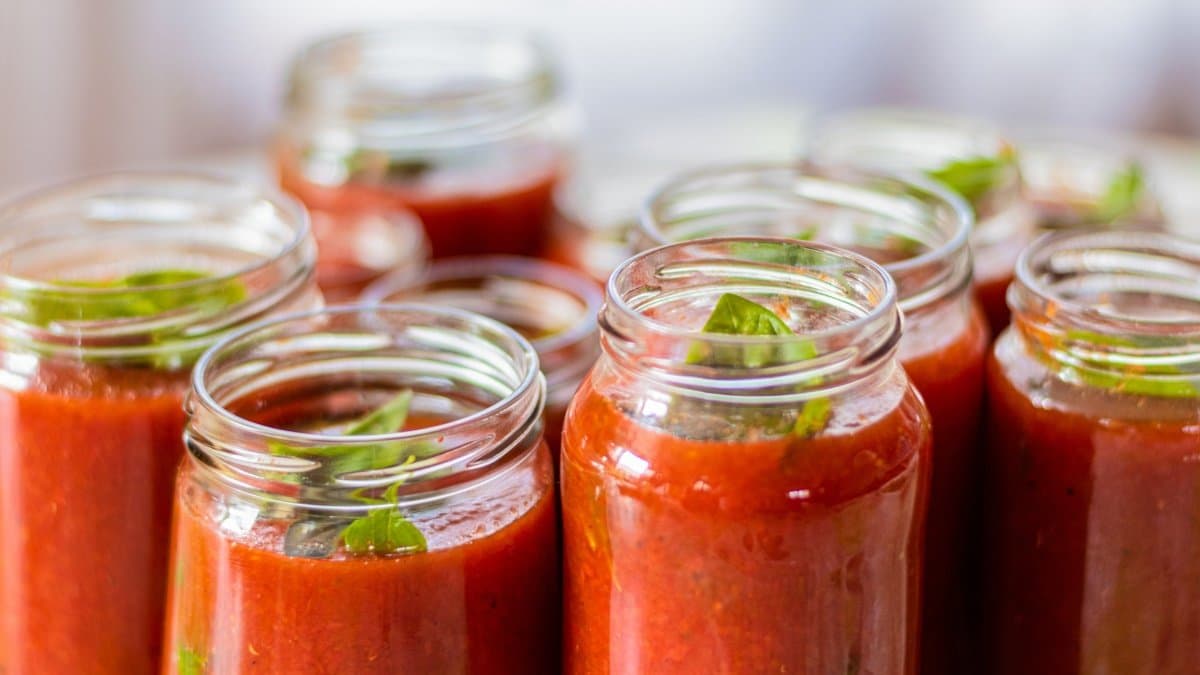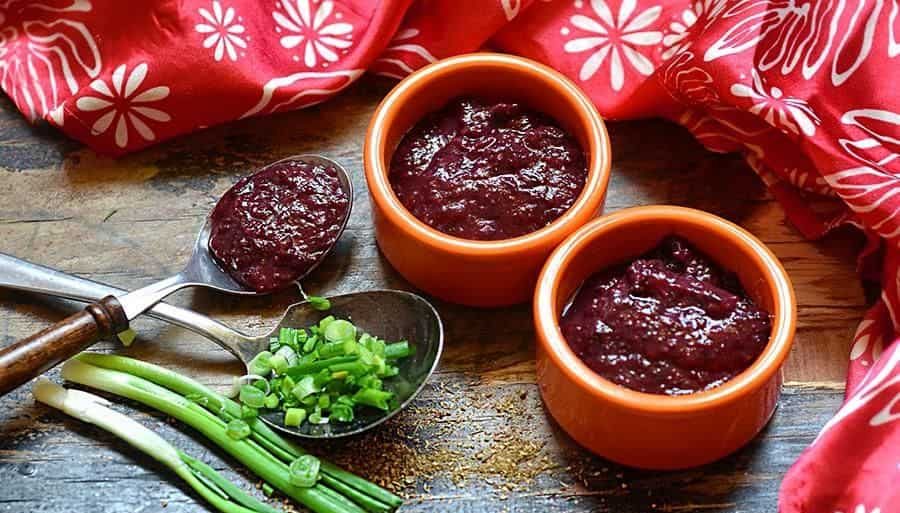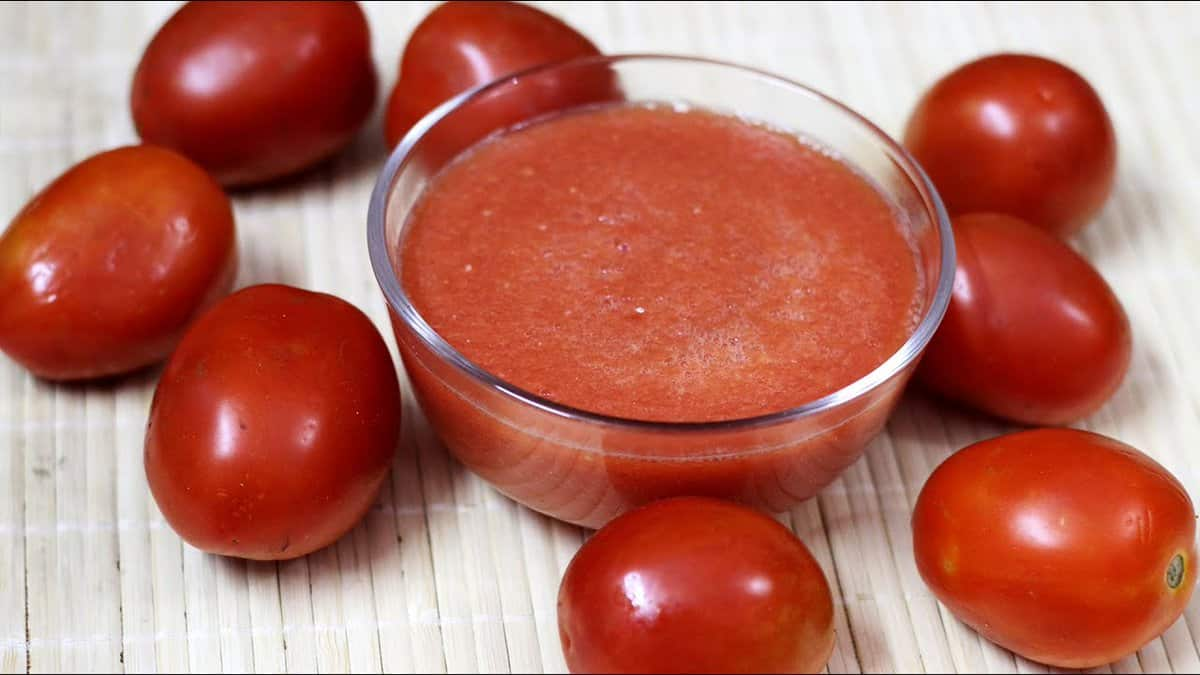The choice of packaging method affects the sorts of materials that can be utilized for the packaging of tomato paste, and different packaging methods call for specific kinds of materials that can be used to fit each approach. The following is a list of the common ways of packaging that are now available on the market: Small tomato paste packet. The majority of these can be found in McDonald's, KFC, and Italian restaurants. The majority of its use is for dipping meals like French fries and potato cakes. Pouch with a stand-up spout for packaging. This may be purchased on the shelves of most grocery stores and is appropriate for use in the home. Containers of tomato paste are made of plastic. The tomato paste was packaged in glass jars. A single-serving packet of tomato paste.A specialized vertical packing machine is used to put the items in their packaging. The device is capable of being segmented into one to twelve lanes in addition to many more varieties. When it comes to dosing and filling tomato paste, it makes use of either a liquid piston pump or a peristaltic pump. It is adaptable and can be adjusted to meet the requirements of individual users.  The majority of this packaging method's packaging materials are made up of three layers, each of which consists of Bopp, vmpet, and PE. Film rolls are manufactured by first designing and printing the material, then laminating it, and then slitting it. After that, it may be transferred to the packaging machine so that bags can be made and filled with the product. Pouch with a stand-up spout for packaging. The spout and the stand-up bag make up the bulk of the spout pouch's structure, which may be broken down into those two sections. To fulfill the criteria of the various types of food packaging, composite materials are typically utilized, and the bottom structure of a spout pouch is identical to that of a stand-up bag. And because it is a soft packaging, there is no trouble in sucking, and the contents are not easy to shake once the sealing has been done, which makes this an extremely ideal new type of packing bag. The tomato paste was packaged in glass jars. Glass has a long history of use as a container material. The fact that it is non-toxic and odorless, as well as translucent, beautiful, a barrier, airtight, and reusable, are among its primary characteristics. In addition, it withstands high pressure and temperatures without breaking down. Both are extremely sterile and capable of being frozen for preservation. The procedure for filling it is, in all essential respects, equivalent to that used for plastic bottles. Filling, capping, and labeling are the primary operations that take place. Because various techniques of packaging calls for the utilization of distinct sets of packaging tools and types of materials, the associated prices will likewise vary. The demand in the market and the price of each potential packaging material should guide the decision.
The majority of this packaging method's packaging materials are made up of three layers, each of which consists of Bopp, vmpet, and PE. Film rolls are manufactured by first designing and printing the material, then laminating it, and then slitting it. After that, it may be transferred to the packaging machine so that bags can be made and filled with the product. Pouch with a stand-up spout for packaging. The spout and the stand-up bag make up the bulk of the spout pouch's structure, which may be broken down into those two sections. To fulfill the criteria of the various types of food packaging, composite materials are typically utilized, and the bottom structure of a spout pouch is identical to that of a stand-up bag. And because it is a soft packaging, there is no trouble in sucking, and the contents are not easy to shake once the sealing has been done, which makes this an extremely ideal new type of packing bag. The tomato paste was packaged in glass jars. Glass has a long history of use as a container material. The fact that it is non-toxic and odorless, as well as translucent, beautiful, a barrier, airtight, and reusable, are among its primary characteristics. In addition, it withstands high pressure and temperatures without breaking down. Both are extremely sterile and capable of being frozen for preservation. The procedure for filling it is, in all essential respects, equivalent to that used for plastic bottles. Filling, capping, and labeling are the primary operations that take place. Because various techniques of packaging calls for the utilization of distinct sets of packaging tools and types of materials, the associated prices will likewise vary. The demand in the market and the price of each potential packaging material should guide the decision. 
tomato paste packaging
The packaging and storage of tomato paste must not only fulfill the purpose of containing the food, but it must also, and perhaps more importantly, serve as an efficient unit for handling and protecting the product from mechanical and other sources of harm. Other than that, the packaging and storage of tomato paste must also fulfill the purpose of containing the food. The packaging container performs additional functions, such as identifying its contents and encouraging the sale of those contents. These are just two of its many uses. When it comes to storing tomato paste, transporting it, and working with it, a wide variety of containers and forms of packaging are used. As a consequence of the fact that modern consumers are confronted with new socioeconomic difficulties and food-related considerations, both of which have a tendency to prefer service quality, packaging plays a crucial part in the process of getting tomato items to the end user. Recent years have witnessed a number of developments in the tomato paste packaging sector. These developments include the introduction of innovative packaging technologies and materials, as well as an increased focus on environmental concerns. To ensure the success of these innovations, retailers will need to streamline their checkout processes in order to cater to the needs of their customers, and the shelf life of tomato paste will need to be extended. 
tomato paste materials
The most widely used packaging materials now on the market are as follows: Miniature jar of paste tomato. Most of these may be found at fast food chains, primarily McDonald's, KFC, and Italian eateries. French fries and potato cakes are only two examples of foods that are commonly dipped in them. The packaged pouch has a spout that stands up. This is suitable for domestic usage and may be found on the shelves of most supermarkets. Tomato paste containers are typically constructed of plastic. Containers made of glass held the tomato paste. Single-serve jar of tomato paste. For this purpose, we use a vertical packing machine. The device can be configured in a wide range of ways, including into one to twelve lanes. The tomato paste dosing and the filling system use either a liquid piston pump or a peristaltic pump, depending on the specifics of the application. It's flexible, so it may be tailored to each user's specific needs. The primary components of the packaging materials used in this approach are Bopp, vmpet, and PE, arranged in a three-layer stack. After the material has been designed and printed, the next steps in the production of film rolls are lamination and slitting.  Once that's done, it might move on to the packaging machine where bags would be created and the product would be placed inside. The packaged pouch has a spout that stands up. Spout pouches can be dissected into their primary components—the spout and the stand-up bag—for easier examination. Composite materials are commonly used to meet the requirements of the various food packaging kinds, and the bottom construction of a spout pouch is similar to that of a stand-up bag. This new style of packaging bag is great since it is soft, so the contents are simple to suckle, and hard to shake once the bag has been sealed. Containers made of glass held the tomato paste. Glass has been used as a container material for centuries. Translucent, gorgeous, a barrier, airtight, and reusable are just some of its many outstanding features. It is also non-toxic and odorless. Furthermore, it is not damaged by high pressure or temperature. Both can be frozen to preserve them indefinitely due to their severe sterility. The method of filling is functionally identical to that of filling plastic bottles. Generally speaking, the processes involve filling, capping, and labeling. The cost of packaging will vary depending on the method used, as will the types and quantities of materials used. Market demand and cost considerations should be taken into account when selecting an appropriate packaging method.
Once that's done, it might move on to the packaging machine where bags would be created and the product would be placed inside. The packaged pouch has a spout that stands up. Spout pouches can be dissected into their primary components—the spout and the stand-up bag—for easier examination. Composite materials are commonly used to meet the requirements of the various food packaging kinds, and the bottom construction of a spout pouch is similar to that of a stand-up bag. This new style of packaging bag is great since it is soft, so the contents are simple to suckle, and hard to shake once the bag has been sealed. Containers made of glass held the tomato paste. Glass has been used as a container material for centuries. Translucent, gorgeous, a barrier, airtight, and reusable are just some of its many outstanding features. It is also non-toxic and odorless. Furthermore, it is not damaged by high pressure or temperature. Both can be frozen to preserve them indefinitely due to their severe sterility. The method of filling is functionally identical to that of filling plastic bottles. Generally speaking, the processes involve filling, capping, and labeling. The cost of packaging will vary depending on the method used, as will the types and quantities of materials used. Market demand and cost considerations should be taken into account when selecting an appropriate packaging method.

